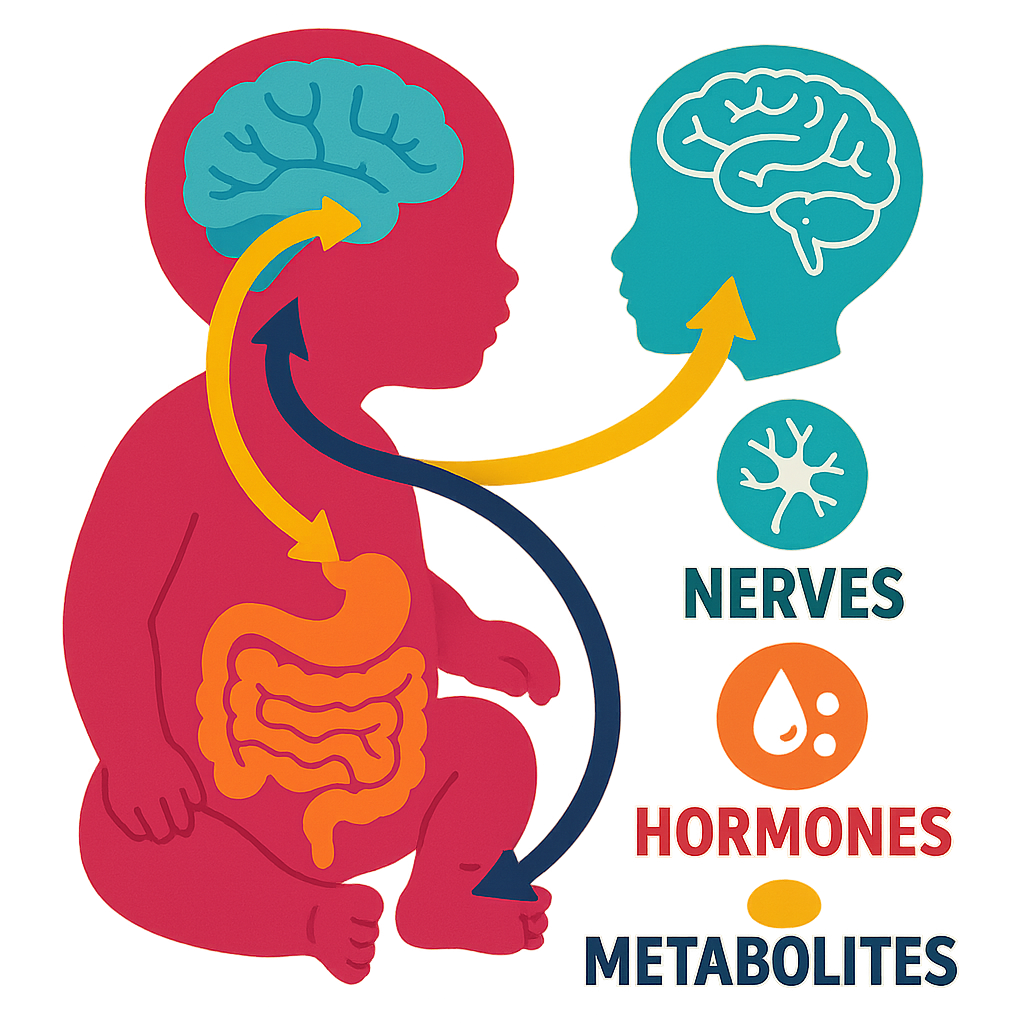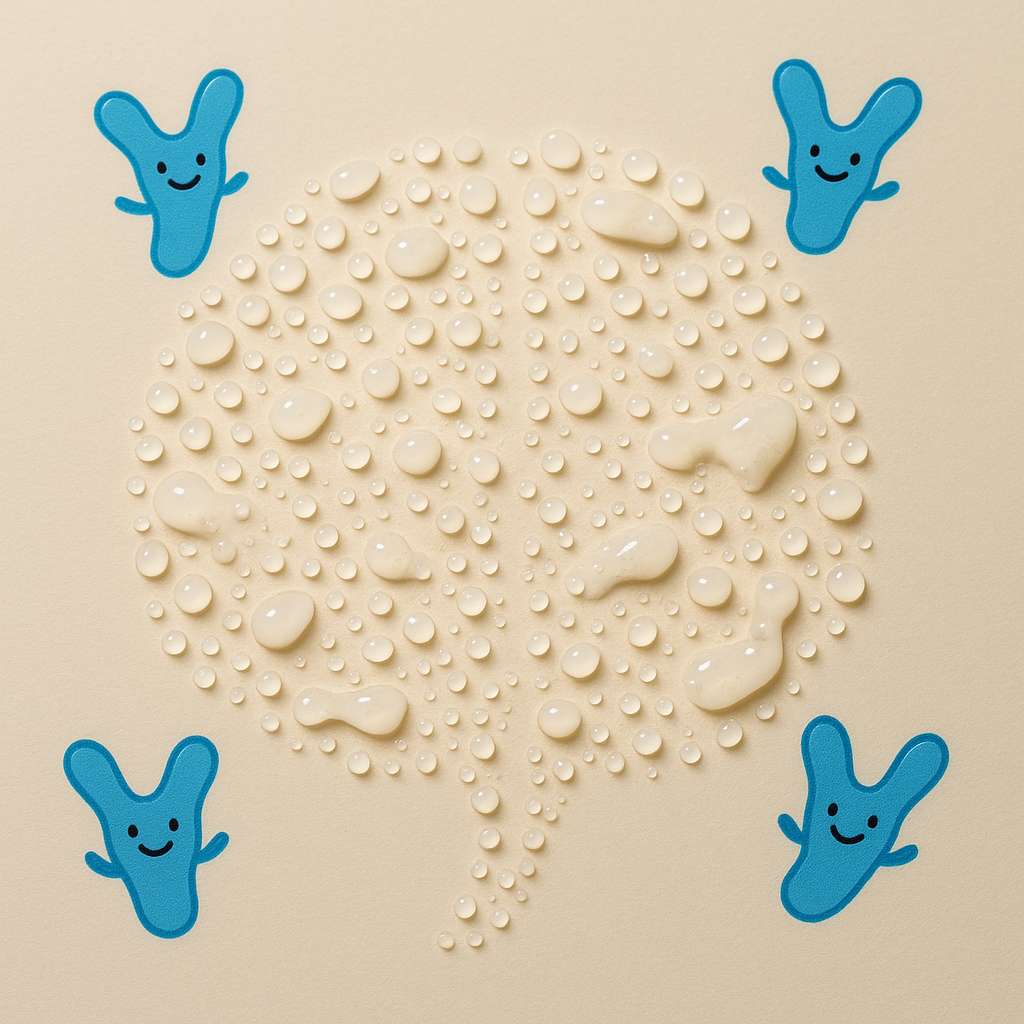Did you know that the trillions of tiny microorganisms living in your baby’s gut could hold the key to their brainpower? It’s a surprising yet fascinating link: a healthy gut doesn’t just support digestion—it plays a starring role in shaping your baby’s brain development. This connection, known as the microbiota-gut-brain axis, is a two-way communication highway between the gut and the brain, influencing everything from memory and language to social skills.
For infants, whose brains are growing at an astonishing rate, the state of their gut can set the stage for lifelong learning and mental well-being. Everyday choices—like how a baby is born, fed, and cared for—can tip the scales in this delicate balance. Let’s dive into the science behind this gut-brain connection.
- What is the baby microbiota-gut-brain axis, and why does it matter so early?
- How does your baby’s microbiome build itself from womb to weaning?
- Which gut microbes and metabolites give infants the biggest brain boost?
- Which everyday choices strengthen—or weaken—the infant gut–brain connection?
- How can you nurture a brain-friendly microbiome day to day?
- Where is the research headed next on the gut-brain link?
- Your top questions about baby gut and brain health
- Final Thoughts: Tiny tummies, big brains
What is the baby microbiota-gut-brain axis, and why does it matter so early?
The microbiota-gut-brain axis is a two-way communication system linking your baby’s gut microbes with their developing brain via nerves, hormones, and immune signals. About 70% of serotonin, a neurotransmitter vital for mood and learning, originates in the gut, earning it the nickname “second brain.”
In the first 1,000 days, neurons form up to one million new connections per second. Gut microbes produce short-chain fatty acids (SCFAs) that support neural connections and synaptic pruning, essential for efficient brain function. They also influence the hippocampus, a region critical for memory and learning. Physical activity enhances these effects, as detailed in How Physical Activity Boosts Your Baby’s Brain.

How does your baby’s microbiome build itself from womb to weaning?
A baby’s gut begins collecting microbes in utero and continues through toddlerhood. Vaginal delivery exposes infants to maternal vaginal microbes, while C-section births may introduce hospital environment microbes. However, research indicates that maternal vaginal microbiome composition does not significantly affect the infant gut microbiome’s long-term development . Check Frontiers in Cellular and Infection Microbiology.
Breast milk contains prebiotic oligosaccharides that promote Bifidobacterium growth, while formula supports a broader microbial mix, including more Firmicutes. By age 3, the gut microbiome significantly diversifies, approaching an adult-like composition.
For premature babies, extra gut support is crucial—see Premature Baby Brain: Helping Your Preemie Thrive.
Which gut microbes and metabolites give infants the biggest brain boost?
Bifidobacterium breve, B. longum, and B. bifidum thrive in healthy infant guts, producing short-chain fatty acids (SCFAs) like butyrate and propionate. These SCFAs strengthen the blood-brain barrier, reduce neuro-inflammation, and fuel growing neurons.
Key findings for parents:
- Some studies suggest a trend where infants with higher Actinobacteria levels may perform better on joint-attention tests, though this isn’t statistically significant as noted in PLOS One.
- Babies with more Bifidobacterium showed stronger neural rhythm tracking on EEG, an early sign of language readiness.
- Breast-milk metabolites like cholesterol are tied to higher toddler IQ, while formula-linked cadaverine is linked to lower scores.

Which everyday choices strengthen—or weaken—the infant gut–brain connection?
Supportive Habits
- Skin-to-skin contact right after birth.
- Partial or exclusive breastfeeding (even 50% breast milk shifts the microbiome toward brain-friendly chemistry).
- Fiber-rich foods in mom’s diet: oats, beans, berries—great “microbe fuel.”
- Exposure to family pets, boosting microbial richness by ~12% and linked to thicker myelin on MRI scans.
Disruptors
- Non-essential antibiotics during pregnancy or infancy, which cut Bifidobacterium levels for weeks.
- Scheduled C-sections without medical need.
- Ultra-processed formulas high in corn syrup solids.
- Over-sanitizing, limiting exposure to harmless environmental microbes.
Gross motor play complements gut care; track progress in Gross Motor Milestones.
How can you nurture a brain-friendly microbiome day to day?
Try these six steps to support your baby’s gut-brain axis:
- Offer breast milk for at least half of the feed. Frozen or donor milk works.
- Discuss antibiotic alternatives with your pediatrician. If needed, consider probiotics like B. infantis EVC001.
- Introduce diverse solids at six months—soft veggies, beans, yogurt—rotating flavors weekly.
- Let your baby explore safely—rolling on the floor, mouthing toys, or supervised outdoor play. Try these 5 Baby Exercises to Boost Brain Development.
- Keep stress low. A calm voice and routines stabilize the HPA axis and gut microbes.
- Engage in sensory play. Textures, sounds, and smells stimulate senses, reduce stress, and support neural connections as per Brown University Health.
Where is the research headed next on the gut-brain link?
Current studies often track fewer than 100 babies and rarely extend beyond age three. Scientists are launching nationwide stool-and-fMRI registries to follow thousands of children over a decade, adding data on maternal stress, diverse diets, and socioeconomic factors.
Only one of 30 randomized trials has tested maternal probiotics during pregnancy—an enormous untapped area. Expect future projects like the NIH Baby-Biome initiative to explore whether boosting mom’s Bifidobacterium levels before birth can hard-wire benefits into fetal brains.
Your top questions about baby gut and brain health
-
Does a gassy baby mean poor gut health?
Not usually. Transient gas is normal as microbes adjust. Concerning signs are chronic diarrhea, blood in stool, or poor weight gain—talk with your pediatrician if you see these. -
Can I give over-the-counter probiotics?
Yes, with guidance. Look for strains studied in infants, such as B. infantis EVC001 or L. rhamnosus GG at ≥1 × 10⁹ CFU, and confirm dosing with your doctor. -
Is formula bad for brain development?
No. Modern formula meets nutrient requirements. Combining it with any amount of breast milk, however, supports a richer microbiota and has been linked to higher cognitive scores. -
How soon will diet changes affect milestones?
Gut microbes shift within days; observable developmental gains typically appear over months as neural circuits mature. Keep a milestone journal to spot trends.
Final Thoughts: Tiny tummies, big brains
The microbiota-gut-brain axis is a vital communication network that links a baby’s gut microbes to their developing brain, playing a key role in cognitive and emotional growth. This connection starts forming in the womb and is influenced by factors like the method of birth (vaginal or cesarean), feeding choices (breastmilk or formula), and early care practices.
Parents can nurture a healthy gut microbiome by prioritizing breastfeeding, limiting unnecessary antibiotics, and fostering a supportive early environment. A well-balanced gut microbiome in infancy can lead to lifelong benefits, including improved mental well-being and cognitive abilities.